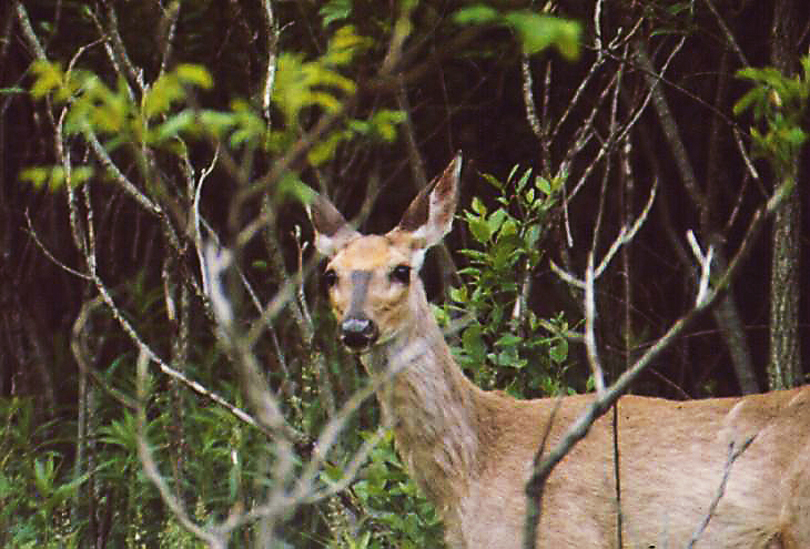SUNY-ESF team receives portion of state grant to manage overpopulation of white-tailed deer

Public complaints of urban deer on the eastside of Syracuse spiked in 2012. Courtesy of Brian Underwood
A team of professors and graduate students from SUNY-ESF recently received a state grant to help curb the hazardous overpopulation of white-tailed deer in Syracuse and DeWitt.
New York state Assemblywoman Pamela Hunter reserved $200,000 in the 2016-17 state budget for the initiative, $150,000 of which will fund the students’ stipends and fund the team’s efforts to quantify the number of deer in nearby herds, those involved in the project said.
This population count is the first step to take in the project before decisions are made on how to decrease the population of deer in the area.
The remaining $50,000 will be held back for the implementation of the project’s proposed strategies, if they are accepted, by Syracuse and DeWitt.
“As the town of DeWitt and Syracuse (east side) decide as to how they would like to remediate, funding is available through this allocation for each municipality,” Hunter wrote in an open letter in late March.
In 2014, a group of citizens and ecologists called the Syracuse-Onondaga County Urban Deer Task Force compiled a study on the number and range of deer on Syracuse’s eastside and the areas surrounding it.
Between 192 and 244 deer resided in the 11.5 square miles of land encompassed in the targeted area, according to the public report. The task force also noted that the highest concentrations of deer were found in secluded areas like Drumlins Country Club and St. Mary’s Cemetery, though they were not limited to those areas.
Public complaints of urban deer on the eastside of Syracuse spiked in 2012.
Spearheading the project is Brian Underwood, an expert on deer management and an adjunct associate professor at the State University of New York College of Environmental Science and Forestry. Also contributing to the project is Donald Leopold, chair of the environmental and forest biology department at SUNY-ESF, along with SUNY-ESF graduate students Jacob Dillon and Paul Picciano.
Following the spike of complaints in 2012, a jurisdictional stalemate began between Mayor Stephanie Miner and the Department of Environmental Conversation over who was responsible for dealing with the deer issue, according to Syracuse.com.
Hunter has since though introduced legislation placing the responsibility of wildlife management on the DEC. But still, the herbivores’ bottomless hunger continues to devastate home gardens and entire plant species alike.
“Deer are basically the single greatest threat to biodiversity in the northeastern United States —period,” Leopold said. “A lot of places that once had lots of native orchids, lots of lilies, lots of trilliums — all those plants are wiped out and they’re not coming back.”
Aside from the different nuisances, deer overpopulation is also a threat to public health. In 2016, State Farm ranked New York state as having a 1 in 161 likelihood of drivers experiencing a deer-vehicle collision. Deer also bring with them the potential for Lyme disease, a bacterial infection that can become life-threatening if left untreated.
“The primary reservoir of Lyme disease resides in the bloodstreams of small mammals. It doesn’t survive in the bloodstream of deer. That’s why deer can’t give you Lyme disease,” Underwood said. “But the adult tick that does carry the disease is host-specific to the adult white-tailed deer.”
Underwood said communities should use a multiple-pronged plan that addresses the problem in several different ways and targets specific aspects of the issue.
Though expensive and time-consuming, surgical sterilization on deer is one option to take, he said. Culling, the selective extermination typically of female deer for their reproductive potential, is another.
“For lots of reasons, people have decided that the most important living thing in the world is a deer,” Leopold said. “That is something that is so illogical to all of us who study living things. It’s incredibly irresponsible for us to allow deer to get to this point.”




